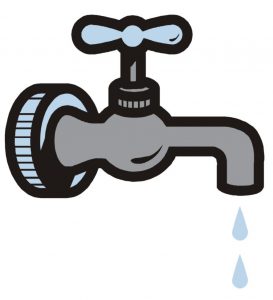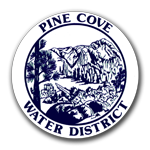Posted by admin on February 9, 2022
We’re into the second month of the new year and so much has happened. Here are a few highlights.
Office re-opened to foot traffic:
Due to illnesses in the office, we had temporarily closed the office to foot traffic. We are happy to announce that we are fully open once again. We ask that you wear a mask when in the building and if someone is already at our counter that you respectfully wait outside to limit the number of people inside.
Stage II Water Conservation:
As of Tuesday, February 1, 2022 Pine Cove entered into Stage II of Water Conservation.
Stage II is mandatory compliance.
Customers are required to limit irrigation of outdoor plants and gardens to the period between 6pm and 8am daily and stop all water runoff. Customers cannot fill or refill swimming pools except the small amount needed to replace evaporation in already filled pools. Vehicles can only be washed using a bucket and a hose with a shut-off nozzle. Immediate repairs must be made to any and all leaking water lines and faucets in household plumbing and yard piping. Customers must also cease watering native vegetation and unplanted areas for dust control. Restaurants shall only provide drinking water to patrons upon specific request.
If you have any questions or concerns, you may talk to General Manager Jeremy Potter 951-659-2675 or email at jpotter@pcwd.org.
Thank you for your understanding and ongoing efforts to help conserve water.
Billing Charges increased:
Effective 2/1/2022, the bi-monthly minimum will be $77.00 for two month billing period, excluding any water usage. Water usage will be billed as follows:
$7.00 per thousand gallons from 0 to 7,500 gallons
$9.00 per thousand gallons from 7,500 to 15,000 gallons
$11.00 per thousand gallons over 15,000
Special Rates and Charges (Resolution #561)
Normal Customer Requested Turn On or Off; changed from $15 to $20
After Hours customer Requested Turn On or Off; changed from a minimum of $40 to a minimum of $50
Delinquent Turn On/Off; changed from $75 to $90
Transfer Fee; changed from $45 to $60
Where more than one (1) Premises exists or is located on a Parcel, a unit charge of $20.00 will be assessed for each separate Premises in addition to normal water use charges for the Parcel, as prescribed in the Rates Schedule.
Personnel change:
General Manager Jerry Holldber has retired as of 12/31/2021
Jeremy Potter has taken the position as our new General Manager as of 1/1/2022
Chris Dumas has been promoted to Leadman
Jensen Beri has been put on full time / permanent status
Gracie, our official Mouse Patroller has a new home with Kat Garver
And we have welcomed our newest office pet – Mousekewitz; a little chihuahua-mix dog
We hope all is well with you and as always, we are here for any questions or concerns.


